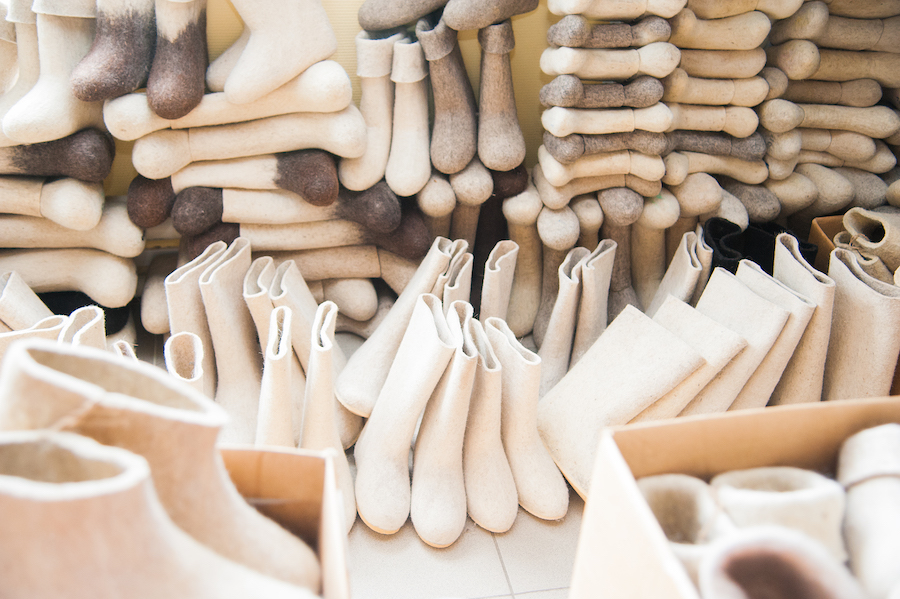Valenki: Russia's Solution to Cold Feet
The temperatures are getting colder in the northern hemisphere, which means that people around the world are tucking away their summer clothes and unpacking their winter outfits—sweaters, scarves, gloves, boots. For Russians, a specific type of boot has come back into fashion in recent years, not only for its utility but for its place within Russian tradition.
These boots are called valenki, a type of woolen boot or, as written in 2007, “the heaviest wool sock imaginable.”
The video above shows footage from the town of Kalyazin, where there is a factory for making these woolen felt boots. The head of production at the factory states (in Russian, and translated by the AP), “Felt boots are the national Russian shoes. And it will always have a place in Russian life. This is not only due to the harshness of the Russian winter, but also because felt boots are made of natural materials and are warm.”
Valenki have been around for centuries, but they became widespread (and more affordable) across the country in the 19th century after the industrial revolution swept in and allowed for quicker production in factories, rather than solely by hand. Legend has it that valenki are what helped the Russians win in both the Napoleonic wars and World War II, as European leather boots could not hold up to the bitter Russian winter. However, the AP notes that valenki “went out of fashion in the 1950s, when Russians got wider access to warm, Western-style footwear.” They also fell out of favor in certain parts of Russia due to the different types of winter experienced: in cities where the streets become wet and slushy, the felt boots do not stay dry and thus are not as effective at keeping feet warm as they are in the countryside, where snow is drier.
They are coming back into style, though, as old styles become new again to younger generations. Today, Russians can find valenki in a variety of styles and designs, from basic gray wool to colorful designer variations. “Russians still wear valenki on trips in the countryside,” and “the Russian military and law enforcement personnel still get them as part of their standard gear.”
This is not to say that the valenki industry isn’t struggling. Though urban Russian youth have expressed interested in them, even to wear to nightclubs, the valenki artisans and factories in the countryside are struggling to maintain their workforces as younger generations flock to the cities and current employees are starting to age out of work. However, perhaps the change from a utilitarian purpose to a fashionable one will help keep the valenki industry afloat. This might mean adapting to the desire for changing styles: the factory in Kalyazin “is trying out new decorations, such as embroidery and appliques, to interest buyers.”
If you’re interested in learning more about valenki, or in seeing the 2.25 meter-tall valenki, try visiting the Russian Valenki Museum in Vyshny Volochyok:
Resources:
